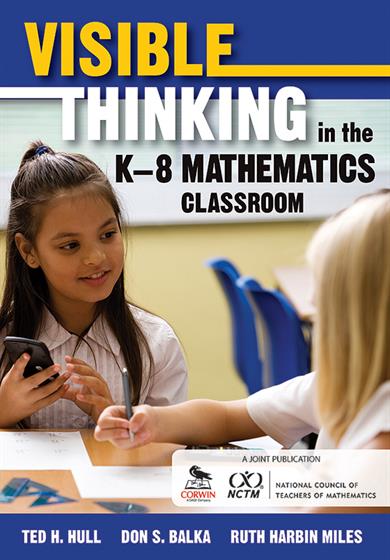Preface
Acknowledgments
About the Authors
Part I. Preparing the Foundation
1. What Is Visible Thinking?
Understanding Mathematical Concepts
Thinking as a Mathematical Premise
Visible Thinking in Classrooms
Visible Thinking Scenario 1: Area and Perimeter
Summary
2. How Do Students Learn Mathematics?
What Is Thinking?
What Does Brain Research Indicate About Thinking and Learning?
What Is Mathematical Learning?
What Are Thinking and Learning Themes From Research?
Example Problems Revisited
Visible Thinking Scenario 2: Addition of Fractions
Summary
3. What Is Happening to Thinking in Mathematics Classrooms?
Improvement Initiatives and Visible Thinking
Visible Thinking Scenario 3: Subtraction With Regrouping
Summary
Part II. Promoting Visible Thinking With an Alternative Instructional Model
4. How Do Effective Classrooms Depend on Visible Thinking?
What Are Strategies, Conditions, and Actions?
Practice Into Action
Technology as Visible Thinking
Visible Thinking Scenario 4: Division
Summary
5. How Are Long-Term Changes Made?
Enhancing Student Learning
Teaching Approaches
Visible Thinking Scenario 5: Mixed Numerals
Visible Thinking Scenario 6: Place Value
Summary
6. How Are Short-Term Changes Made?
Pitfalls and Traps
Strategy Sequence
The Relationships Among the Strategy Sequence, Conditions, and Goals
Visible Thinking Scenario 7: Basic Addition and Subtraction Facts
Visible Thinking Scenario 8: Exponents
Summary
7. How Are Lessons Designed to Achieve Short-Term and Long-Term Changes?
The Current Approach to Teaching Mathematics
Elements of an Alternative Instructional Model
Types of Problems
Summary
Part III. Implementing the Alternative Model at Different Grade Levels
8. How Is Thinking Made Visible in Grades K–2 Mathematics?
Brainteaser Problem Example
Group-Worthy Problem Example
Transforming Problem Example
Summary
9. How Is Thinking Made Visible in Grades 3–5 Mathematics?
Brainteaser Problem Example
Group-Worthy Problem Example
Transforming Problem Example
Summary
10. How Is Thinking Made Visible in Grades 6–8 Mathematics?
Brainteaser Problem Example
Group-Worthy Problem Example
Transforming Problem Example
Summary
Part IV. Continuing the Work
11. How Do Teachers, Leaders, and Administrators Coordinate Their Efforts to Improve Mathematics Teaching and Learning?
Working With Administrators
Embedding Lessons Into the Curriculum
Providing Professional Development
Co-planning and Co-teaching
Summary
Appendix A: Research Support for Visible Thinking Strategies, Conditions, and Actions
Appendix B: Lessons Using Technology: Additional Materials
References
Index




